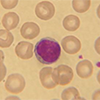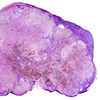Digoxin
Specimen Volume
1 ml bloodSample Preparation
Centrifuge specimen
Turnaround Time
1 daySample Processing In Laboratory
Usual
Sample Stability
Specimens are stable at 2-8ºC for 2 days. Store separated serum/plasma at -20ºC for longer periods (up to 6 months).
General Information
Digoxin is a digitalis glycoside drug used to treat heart failure and abnormal heart rhythms. This test measures the amount of digoxin in the blood. Heart failure, including congestive heart failure (CHF) causes the heart to become less effective at circulating blood. As a result, blood accumulates in the legs, hands, feet, lungs and liver, causing swelling, shortness of breath, and fatigue. Digoxin is used to reduce some symptoms of heart failure. It strengthens the contractions of the heart and helps it to pump blood more efficiently. Digoxin also helps control the heart rate and abnormal heart rhythms known as arrhythmias. It will not cure heart failure or arrhythmias, which are long term conditions, but can, along with diet, exercise, and other medicines, help to manage the symptoms. Digoxin levels need to be monitored because digoxin is a drug that has a narrow safety range. If the level in the blood is too low, symptoms may recur. If the level is too high, side effects may occur, such as: dizziness; blurred vision or seeing yellow or green halos; vomiting; diarrhoea; irregular heartbeat; difficulty breathing. Digoxin dosage may be adjusted based on the measured levels.
Patient Preparation
Sampling time: Ideally trough sample taken immediately before the next dose. Sample must be taken at least 6 hrs after an oral dose is given and 4-6 hours after an intravenous dose.
Resampling time: Within 24 hours of loading dose to confirm target concentration. After at least 1 week to assess maintenance dose.
Record the time of the last dose on the request form.
Notes
Digibind therapy for digoxin toxicity interferes in the measurement of digoxin. Electrolyte imbalance (decreased potassium and/or magnesium or raised calcium) can potentiate digoxin toxicity. Thyroid dysfunction may alter the clinical response. Toxic effects include nausea, vomiting, arrhythmias, visual disturbances, weakness and lethargy (noted > 2 micrograms/L).
Reference Range
Therapeutic Range: 0.8-2.0 ug/L
Specifications
-
EQA Status:
NEQAS
- EQAS Scheme: Yes








